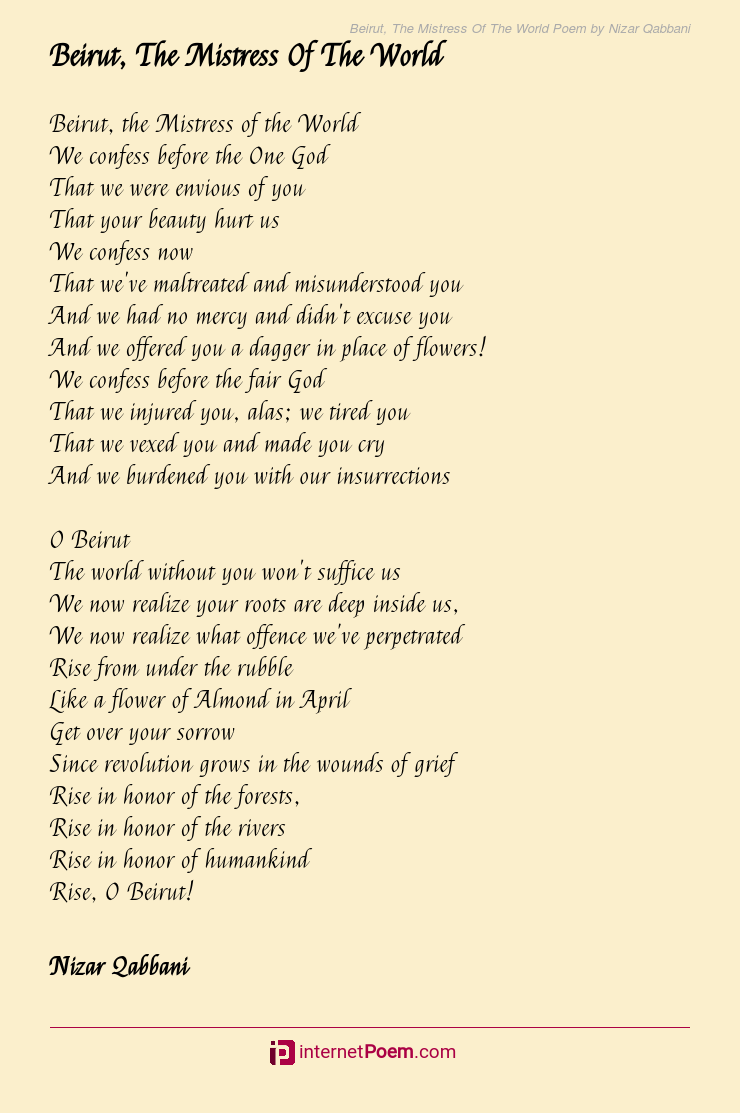



The study answered all the above mentioned questions the researcher (translator) employed four methods of translation in rendering Balqees poem into English: (POPOTM), (POPRTM), (PRPOTM) and (PRPRTM). The researcher raises the following questions: Does the translator (researcher) render Balqees poem into Poetic text in English? What are the methods of translation he followed? What are the problems faced by the translator in rendering Balqees Poem into English? What are the proposed solutions of the problems? To answer the abovementioned questions, the researcher translated the poem into English and analyzed it to see the types of methods used and to underline the problems and to present solutions.

This study aims at rendering the poem whose name is mentioned above into English analyzing it to pinpoint the appropriate methods of translation and problems with their solutions. Finally, the researcher presents the Translation Analysis Results. Part four is a Translation Analysis of Nizar Qabbani's Poem Balqees. As for part three, it is dedicated to the translation studies, methods, strategies and model of translation. The study is of the following parts: Part one is concerned with the introduction, while the second part is about an overview with regard to the poet's life. The study is a translation of Nizar Qabbani's Poem titled "Balqees" into English. 1 The Study of the Translation of Nizar Qabbani's Poem Balqees into English: Problems and Solutions College of Arts /AL-Iraqia University 1Ģ Abstract Literary translation is defined as one of the most difficult types of translation because literary texts embrace a lot of figurative devices and aesthetic effects that require skillful translators to render them into the target language successfully.


 0 kommentar(er)
0 kommentar(er)
